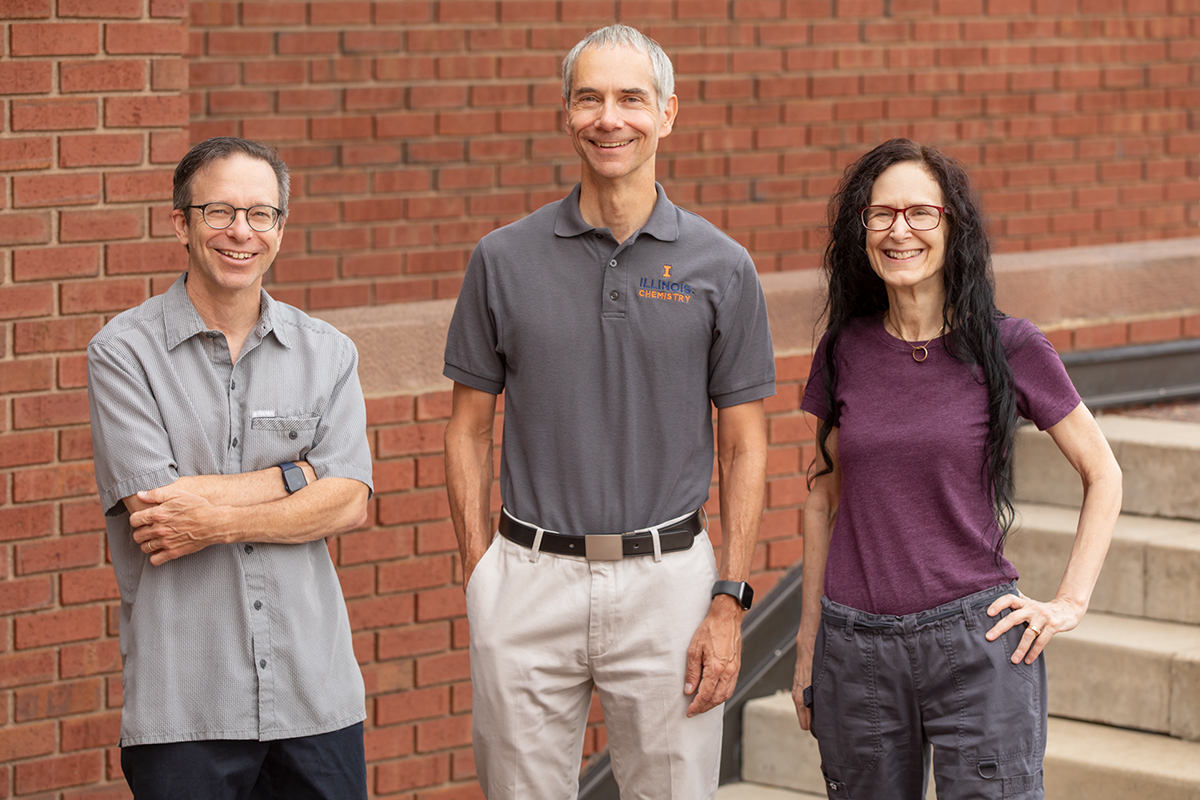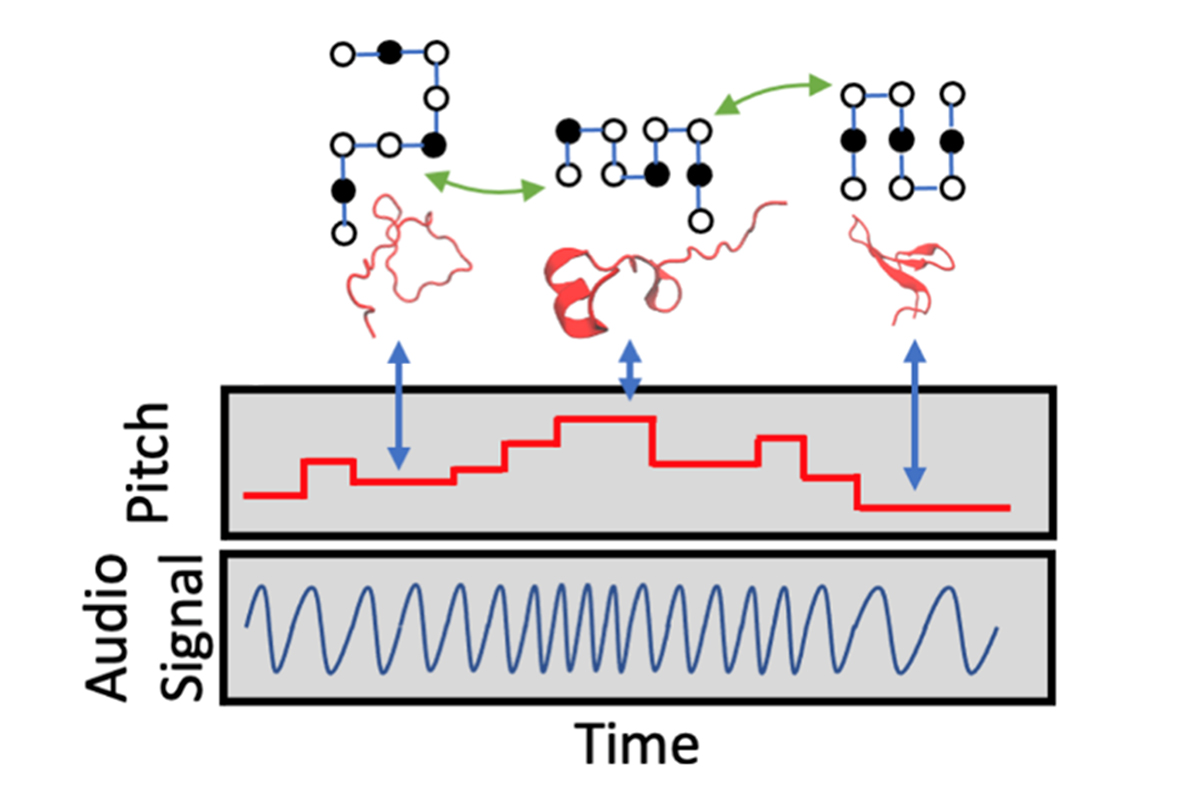
Illinois music professor and composer Stephen Andrew Taylor, chemistry professor and biophysicist Martin Gruebele and Illinois alumna, composer and software designer Carla Scaletti are using sound to depict biochemical processes and better understand them.
Photo by L. Brian Stauffer
CHAMPAIGN, Ill. — Musicians are helping scientists analyze data, teach protein folding and make new discoveries through sound.
A team of researchers at the University of Illinois Urbana-Champaign is using sonification – the use of sound to convey information – to depict biochemical processes and better understand how they happen.
Music professor and composer Stephen Andrew Taylor; chemistry professor and biophysicist Martin Gruebele; and Illinois music and computer science alumna, composer and software designer Carla Scaletti formed the Biophysics Sonification Group, which has been meeting weekly on Zoom since the beginning of the pandemic. The group has experimented with using sonification in Gruebele's research into the physical mechanisms of protein folding, and its work recently allowed Gruebele to make a new discovery about the ways a protein can fold.
Taylor's musical compositions have long been influenced by science, and recent works represent scientific data and biological processes. Gruebele also is a musician who built his own pipe organ that he plays and uses to compose music. The idea of working together on sonification struck a chord with them, and they've been collaborating for several years. Through her company, Symbolic Sound Corp., Scaletti develops a digital audio software and hardware sound design system called Kyma that is used by many musicians and researchers, including Taylor.

A graphic from the journal article illustrates the process of a protein (the chain of spheres at the top) folding, unfolding or misfolding as it moves around. The structural parameters of the protein are coded into sound, producing a variable-pitch sound waveform, for example. Timbre, pan, loudness and other parameters can be adjusted based on data input to represent different aspects or qualities of a protein.
Courtesy Biophysics Sonification Group






